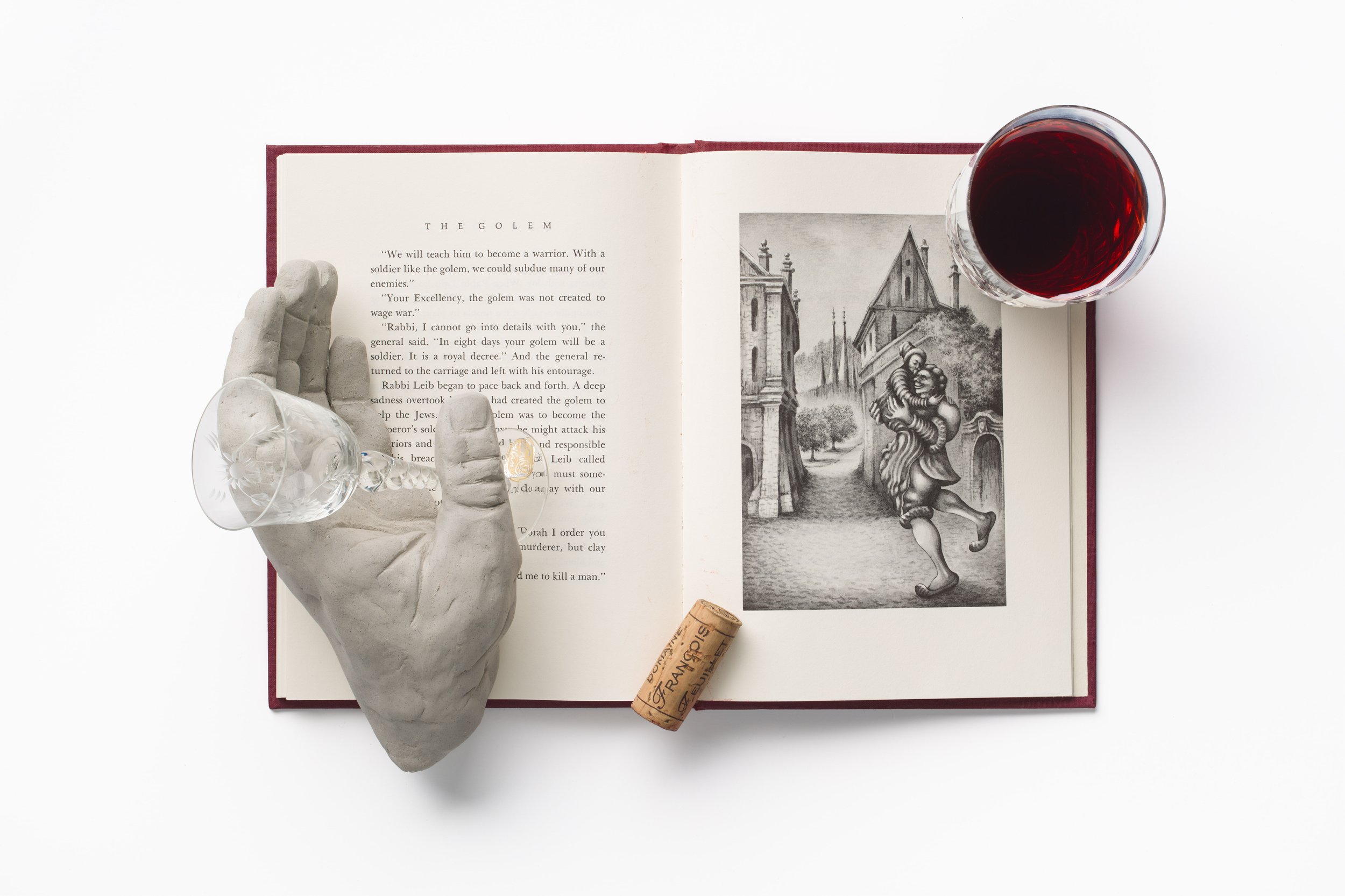
Prague Myths
These assembled works were commissioned by Andaz Prague, a luxury art hotel in the old Sugar Palace in Prague, Czech Repubilc. The stories represented are three of the founding myths of Prague.
Pleasures of Libuše
Princess Libuše was the youngest of Czech Duke Krok’s three daughters who known as a noblewoman and a prophetess- she could predict the future. The ceramic element in this work represents a section of the ruins of what is known as Libuše's Bath, which still stand on a rocky outcrop under the former palace in in Vyšehrad. According to legend, she regularly bathed with her young lovers (it is said that water was brought to the baths in buckets and then emptied through a hatch). When the youngsters stopped entertaining her, Libuše simply opened the hatch at the bottom of the bath and let them fall to their death.
Keys to the Jewels
This image represents the 7 keys to Crown Jewels of Prague. The tradition of the seven keys was established in 1791 by King Leopold II when he agreed to comply with the wish of the Czech Estates to return the jewels to Prague from Vienna. They were put safely into St. Vitus Cathedral at Prague Castle, this time in the crown archives beyond the St. Wenceslas Chapel behind iron bars with five locks. They were placed in a special chest with additional two locks, the two keys to which were given to two guards of the jewels. Here, my imaginative interpretation of the keys are made from black midfire ceramic and arranged alongside some valuable vintage European jewellery atop the title page from Two Prague Stories by famous Czech author Rainer Maria Rilke.
Golem Like Wine
This image is inspired by the Nobel laureate Isaac Bashevis Singer’s telling of the legend of the golem, the clay giant who aids the Jews of Prague in their time of need. The Golem is brought to life only when the rabbi in the story inscribes the sacred name on his clay forehead. The only power that can reach the golem’s heart is a young servant girl called Miriam, who introduces the Golem to red wine in order to get him drunk and finally rub the inscription from his forehead, saving the city of Prague. When she first introduced the Golem to red wine he exclaimed ‘Golem like wine!’ In this image, I have used Bohemian Crystal glasses (which belonged to my grandmother who was coincidently named Miriam) and red wine to represent the key moment in the story. The carved clay hand of the Golem is made from raw (unfired), still damp stoneware clay.
All photography by Matthew Stanton.




